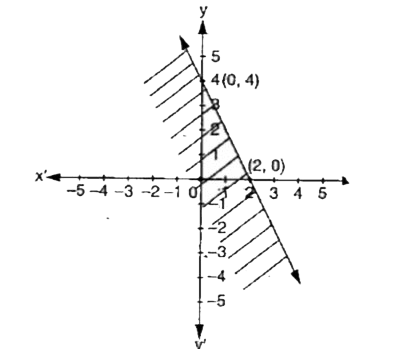Which of the following is true for the shaded fractions of models shown below ?

P: Shaded fraction of model-1
Q: Shaded fraction of model-2
A
P=Q
B
P<Q
C
P>Q
D
None of these
Video Solution
Text Solution
The correct Answer is:C
|
Answer
Step by step video & image solution for Which of the following is true for the shaded fractions of models shown below ? P: Shaded fraction of model-1 Q: Shaded fraction of model-2 by Maths experts to help you in doubts & scoring excellent marks in Class 6 exams.
Updated on:21/07/2023
Topper's Solved these Questions
- BOOK - SCIENCE OLYMPIAD FOUNDATION CHAPTER - FRACTIONS EXERCISE - Everyday Mathematics5videos
FRACTIONS
- BOOK - SCIENCE OLYMPIAD FOUNDATION CHAPTER - FRACTIONS EXERCISE - Achievers Section (Hots)5videos
FRACTIONS
- BOOK - SCIENCE OLYMPIAD FOUNDATION CHAPTER - DECIMALS EXERCISE - Achievers Section (Hots)5videos
DECIMALS
- BOOK - SCIENCE OLYMPIAD FOUNDATION CHAPTER - IMO MODEL TEST PAPER 1 EXERCISE - ACHIEVERS SECTION5videos
IMO MODEL TEST PAPER 1
Similar Questions
Knowledge Check
- Question 1 - Select One
Which of the following inequations represents the shaded region?
 A2x+y≤4B2x+y≥4Cx+2y≤4Dx+2y≥4
A2x+y≤4B2x+y≥4Cx+2y≤4Dx+2y≥4 - Question 2 - Select One
Which of the following is true when Balmer gave his model for hydrogen atom?
AIt was not known that hydrogen lines could be explained as different of term like R/n2withR being a constant and n an integet.BIt was not known that positive charge is concentrated in a nnucleus of small size.CIt was not known that radiant by hvwithh being a constant and v a frequency.DBohr knew term like R/n2 and in the process of choosing allowed the orbits to fit them, he got'' angular momentum =n/2π as a deduction. - Question 3 - Select One
Which of the following is not ture for the quantum mechanical model of the atom?
AEven though there is one electron in an H atom, there are many atomic orbitals in the atom as many wave functions are possible as the solution of the wave equation.BAll the information about the electron in an atom is stored in its orbital wave function ψ and quantum mechanics makes it possible to extract this information out of ψ.CThe probability of finding an electron at a point within an atom is proportional to the square of the orbital wave function, i.e., |ψ|2 at that point.D|ψ|2is known as the probability density and can never be positive.
Which of the following is true ({.} denotes the fractional part of the function)?
View SolutionWhich of the following is incorrect regarding limitations of Borhr's model?
View SolutionWhich of the following is considered as more realistic growth model ?
View SolutionWhich of the following are the limitation of Bohr's model ?
View SolutionWhich one of the following is not a component of lac operon model ?
View Solution
